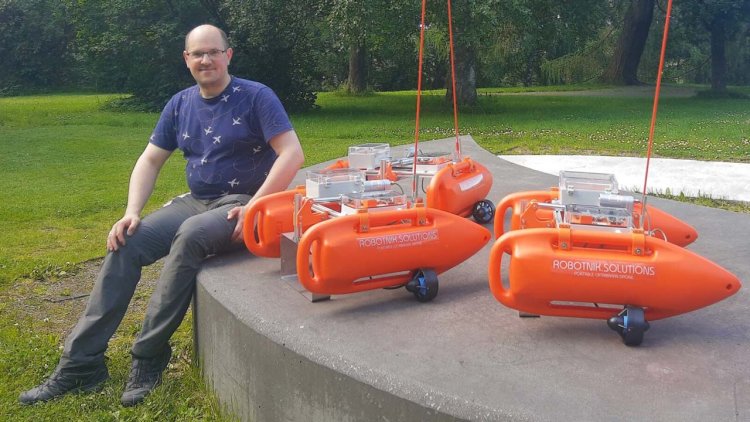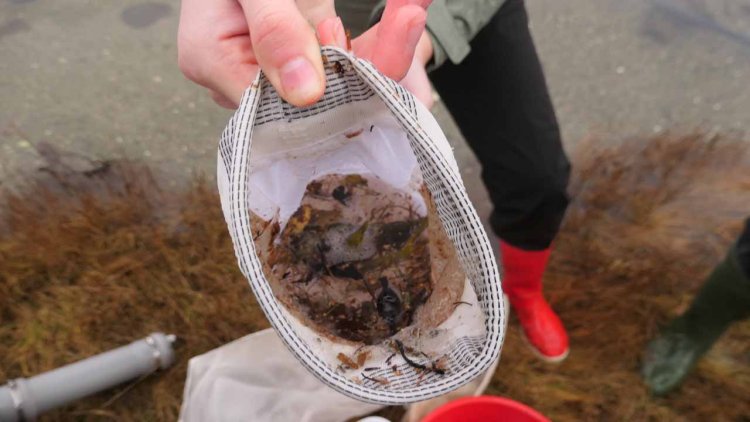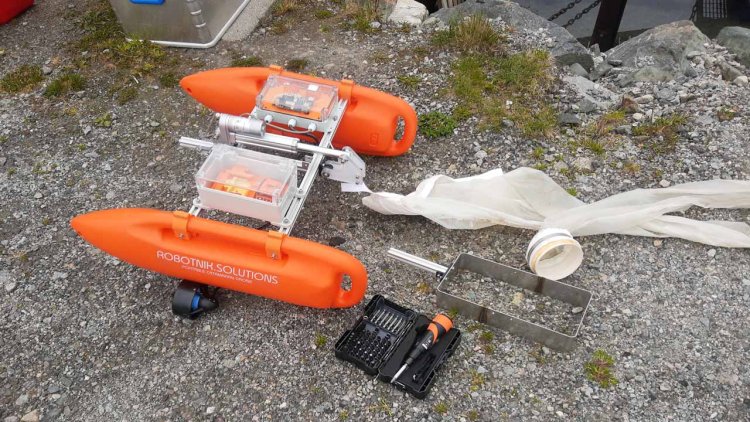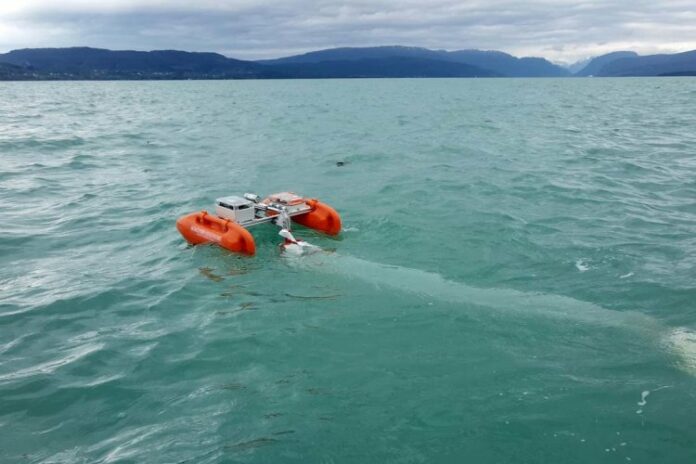The USV is a joint effort by an interdisciplinary team – Andrea Faltynkova, a PhD candidate at the Department of Biology, and Artur Zolich, a postdoc at the Department of Engineering Cybernetics.
Faltynkova studies microplastics in the ocean. Microplastics are bits of plastic smaller than 5 mm, which is roughly the size of the end of a pencil. While researchers know that microplastics can have negative effects on marine or freshwater organisms, there’s less known about how they affect human health. But studying microplastics is a challenge because of the nature of the substance itself, she says.
“Microplastics are so heterogeneous. It’s a very large, diverse group of particles. Not only that but they are very unevenly distributed. Microplastic is not like other dissolved pollutants that can be detected even in small quantities of water or soil. If you go and you take a litre from the sea, and there’s no plastic in it, can you conclude that there is no plastic in the sea?”
“People go out with a boat and sample a few times, and then try to draw conclusions based on how much plastic they’ve picked up. But we really have no idea of knowing how good that estimate is.”

Faltynkova’s main research project is to adapting and developing a technique called hyperspectral imaging to identify and count microplastic. Hyperspectral imaging is a technology developed in the mid-1980s for studying the Earth from aircraft or from space. It’s now widely used in everything from studying underwater shipwrecks to identifying different human tissue types.
This type of imaging is also used by the recycling industry to separate plastics, making it a perfect tool to study microplastic.
This new method emphasizes simplicity and speed; all Faltynkova has to do is take a picture of her samples using a hyperspectral camera. The rest of the work is done by the computer model she’s built to process the images. The IDUN computing cluster at NTNU allows her to quickly process large amounts of data to determine what types of plastics have been collected in the sample.
But then there’s the issue of collecting enough samples from the ocean so that she can say something meaningful about what she has found.
Most microplastics sampling requires towing a net behind a boat at a very slow speed, which is both costly and time-consuming.

Faltynkova’s use of a hyperspectral camera to catalogue different types of plastics quickly and efficiently from her samples means that she can study a lot of samples. Pamela’s low cost and ability to work independently means that Faltynkova can use it to collect multiple of samples quickly.
She said:
“What I’m trying to do is enable fast analysis (with hyperspectral imaging), paired with a method that allows fast sampling. That together is what’s really going to increase the overall ability for us to effectively map and monitor plastic pollution.”
Pamela, buoyed by its two big orange floats, just like the ones from the popular TV series Baywatch, can travel a pre-programmed course without the need for a researcher to follow along or supervise the vehicle as it does its job, says Zolich, who invented the robot.
Faltynkova and Zolich’s collaboration was initiated by NTNU biologist Geir Johnsen, and has been supported by Tor Arne Johansen from the Department of Engineering Cybernetics. Johnsen and Johansen are both key scientists at the Centre for Autonomous Marine Operations and Systems (AMOS).

When Faltynkova’s marine biology colleagues saw Pamela, they immediately began to ask if it could be adapted to their work. She uses the robotic vehicle to tow a kind of net that is commonly used by biologists, called a plankton net, to collect surface water samples for microplastics.
The robot has been officially presented to a wider audience at the 9th Norwegian Environmental Toxicology Symposium and at a workshop for microplastic researchers in Athens, Greece. The researchers have also been contacted by international groups, including the Dutch NGO The Ocean Cleanup and the California State Water Resources Board.
Pamela is currently being tested to sample salmon lice as part of a larger study conducted by NTNU and researchers from the Norwegian Institute of Nature Research. The researchers, including Professor Bengt Finstad and PhD candidate Nathan Mertz, have developed a passive sampler to look at salmon lice larvae concentrations — which is the stage at which they spread most widely. Zolich shifted the location of the sampling net on Pamela so that it can sample salmon lice too. It is now being tested along with the passive samplers.



